A ‘Foley’ is something you’ve probably never heard of, but you’ve almost certainly heard one. They are the sound effects added to a film to enhance the audio quality and give you a better experience. They can help to turn things that don’t exist into a reality and are essential in filmmaking.
How to Watch a Movie!
Watching our favourite movies and home films have always been entertaining for family and friends. Until recently, however, it was difficult to see exactly what you had filmed unless you had a couple of strategically placed cables to hook up to your TV (or a suitable video cassette your VCR didn’t chew up). Back in the day, watching your movies used to be limited to your TV box, sat in the front room with your parents squashed into the same room and your younger siblings running around in front of your grainy, shaky TV set.
BFI: Local History
News came this week that the British Film Institute has digitised thousands of films and made them available on their BFI Player to stream. Much like with our 8mm film to DVD transfers, they have made otherwise unavailable and unseen footage from all over Britain available on an accessible and easy to use format.
Stop. Motion Picture Time!- Creating a Stop Motion Animation Movie
Have you ever made a flick book?
You know, when you make a series of doodles in the corner of your page, over a series of pages and then you flick through the corners and your doodle looks like it’s moving?
If you have, congratulations! You’ve started on the long, addictive road of stop motion animation!
3 of the Best ‘Found Footage’ Movies Ever!
Found footage movies have become an increasingly popular genre over the last 20 years or so. It started with indie filmmakers, and there are now major blockbusters that are using this format. Based on the idea that the footage shown has been found after a given event, with the jumpy camera movements and grainy footage, they are made to look like real home movies.
With this increased popularity we thought that now was a good time to pick some of our favourites and first is possibly the most famous of all…
Famous Home Movie Makers – Ray Harryhausen
In the first part of our series on famous movie makers who began by shooting in the family basement or garage, we looked at Nick Park, who started creating his phenomenal animations simply as home movies. Continue reading
Spoiler Alert! (No… Seriously)
At Cine2DVD we don’t just work tirelessly to help you and yours transfer Super8 to DVD; we live for films in all formats – including the cinema. But before we go on any further, we have to tell you that the following blog will contain spoilers to some of the greatest films to grace the big screen.
Famous Home Movie Makers- Nick Park
Ah, the movies; one of the most popular forms of entertainment of the century. With amazing special effects and gripping storylines, it’s easy to forget that these plots aren’t actually real sometimes.
Film makers can seem like magicians, but even they had to begin somewhere. What better place to start than creating videos at home?
Believe it or not, Academy Award winning animator Nick Park began his creative career by creating home videos. Join us as we take a deeper look at how his early exposure to creating homemade films helped him achieve his massive success.
Early Years
Nick Park was born in Preston, Lancashire in 1958. From an early age, he was interested in drawing comics and adopted his father’s habit of collecting items and spare parts from around his neighbourhood. This collection of items would come in handy when Nick began to create his own stop motion films at home; using his mother’s 8mm camera and items from her dressmaking kit to create props, characters and sets for his animated shorts.
By the age of 13, he had finished his first animated short, which was entitled Walter the Rat. At 15 he had created another short named Archie’s Concrete Nightmare which he had submitted to a BBC young animator film competition. The short didn’t win, but it did air on national TV on BBC2.
Nick then went on to study at Sheffield City Polytechnic where he studied art, and followed this up by attending the National Film and Television School where he began creating his first film, the famous Wallace and Gromit short, A Grand Day Out.
The unfinished film soon caught the eyes of Peter Lord and David Sproxton, animators at the highly acclaimed Aardman Animation studio. They were so impressed with Nick’s work that they hired him in 1985.
Professional Career
Initially, Nick didn’t have a huge role at Aardman Animations; contributing to commercials and working alongside his colleagues on Peter Gabriel’s award winning Sledgehammer music video. However, following the success of his first Wallace and Gromit installation, Nick followed A Grand Day Out with The Wrong Trousers and A Close Shave.
With the additional success of his animated short Creature Comforts , Nick had securely cemented himself in the animation industry, and was quickly rising to fame for the work that he was producing.
After catching the elusive eye of Hollywood, Nick and Peter Lord co-directed the first Aardman feature length film Chicken Run, which was distributed by DreamWorks Studios. After co-producing a feature length Wallace and Gromit adventure, The Curse of the Were-Rabbit in 2005 which was also distributed by DreamWorks, Aardman and their famous distributor ended their association due to creative differences.
Nick’s initial introduction to creating homemade films had given him the skill set and experience to create movies at an early age. This experience is essential and without it, he may not have been as successful as he is today. The most important thing to note is that he created these initial shorts through his own interest and determination, with no pressure of an industry to deter him. Nick is an excellent example of what can be achieved through perseverance and a genuine interest in film making. Who knows what some of your own home videos can help you achieve?
At Cine2DVD Transfers, we can help you transform your home movies onto a digital format, so that you can easily view them any time you desire. We specialise in the transfer of 8mm Cine Film to DVD, so don’t delay in letting the world see your masterpieces. Who knows, you may become the next Nick Park! Interesting right? If you would like more information, contact us by calling 0800 592433 today and see how Cine2DVD Transfers can help you!
A Guide to Creating Movie Magic
We’ve spoken a lot about preserving your memories- it is, after all, one of the best ways to keep everything preserved in stunning quality. But what about creating those memories in the first place? Welcome, ladies and gentlemen, boys and girls, to the brilliance of the home cinema.

There’s a lot to take in when creating your very own of cinematic experience. There’s so much awesomeness and creative excellence to capture, and here we will give you an amazing checklist to accompany your home made movie experience!
Setting the mood
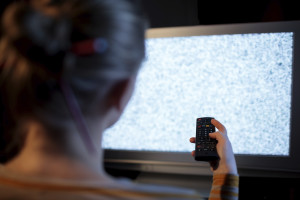
Have you ever walked into a screening of the latest blockbuster and had this immense excitement building from the tips of your toes right up to your hairline? Have you felt the air vibrate with a car explosion or been so immersed with the actors on screen that you haven’t realised your dad has been stealing your popcorn? Well, you can blame all of that on the mood. Here’s a few tips to help you recreate it:
- Plunge the room into darkness. Switch off the lights and draw the curtains; let nothing but the glow of the TV illuminate your friends and family
- Set up the seats so you can easily see the screen – the last thing you want is a crick in your neck halfway through your master piece
- Have a bowl of warm popcorn and a can of your favourite drink at hand – trust us, you’re going to want them.
Creating a home movie

Now you’re all ready to go, you need a movie to watch. Although it may be very tempting to watch the latest release in the comfort of your own home, there’s nothing more entertaining than watching the best, the brightest, and the funniest members of your family and friends on the silver screen. So, to get you started on your movie making adventure, here are a couple of pointers:
- Plot; before anything else, you should have a plot in mind. From the Adventures of Mr Tibbles the Cat, to a comedy about the neighbours’ tomato garden – your creativity knows no bounds in your plot.
- Finding the best actors to bring your movie to life is very important, and of course some of the very best home movies are made with the people you love the most. There’s nothing wrong with letting your younger siblings play adults and your friends two years older than you play children!
- Finding the location to shoot your movie is the best part of film making! Whether it’s in a field, a quiet street, a rain splattered wood or a cordoned off a section of your own home; performing different scenes in different locations will make your movie look all the more professional!
Sound
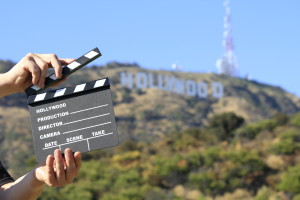
Background noise and the howl of the wind through your microphone can spoil the ambiance you may want in certain scenes. Though in some cases this can’t be helped – unless you want to fork out for an external microphone – you can always adjust the background noise on your computer. Where sound is concerned you can also add in sound effects; a car horn or a dog barking can create that all important cinematic experience you’re striving for!
Watching the film
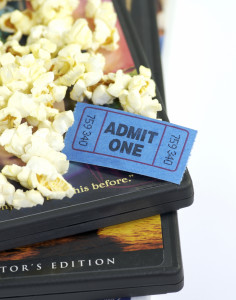
Once you’ve finished your masterpiece, once your actors have read their last lines and you’ve touched up the final scenes with state-of-the-art sound effects and animations, it’s time to watch your movie. Computers can create an unclear image when transferred to the TV – or from your video camera to the screen – and, for your movie master piece, that is the very last thing you want to happen. Transferring your magical 8mm Cine Film to DVD is the best way to preserve your movie and deliver a top quality picture to your home cinema.
So now you have your crystal clear homemade movie, your homemade cinema and your popcorn at hand, it’s time to sit back relax and enjoy the film. Cine2DVD can help you to turn your homemade movies into a real cinematic experience, so contact us today on 0800 592433 for more information.
Advantages of the Twenty-First Century
Picture this; you’ve taken a leap back in time to the wonderful era of VCR and videos…
You’ve just placed your children’s favourite Disney movie into the heavy black machine, the TV is on, and your little darlings have settled themselves down to a good hour of complete and utter silence. You’re looking forward to this when suddenly, the VCR splutters; it whines, it clicks and the movie shows several Aladdins being chased up the screen by grainy white lines.
Oh dear. Now your quiet time is threatened, and the only thing you can think of doing is pulling out the video to stop your little angels from kicking up a fuss. Here’s the problem; the tape gets trapped and is torn from its case. The movie is ruined and so is your hour of peace.
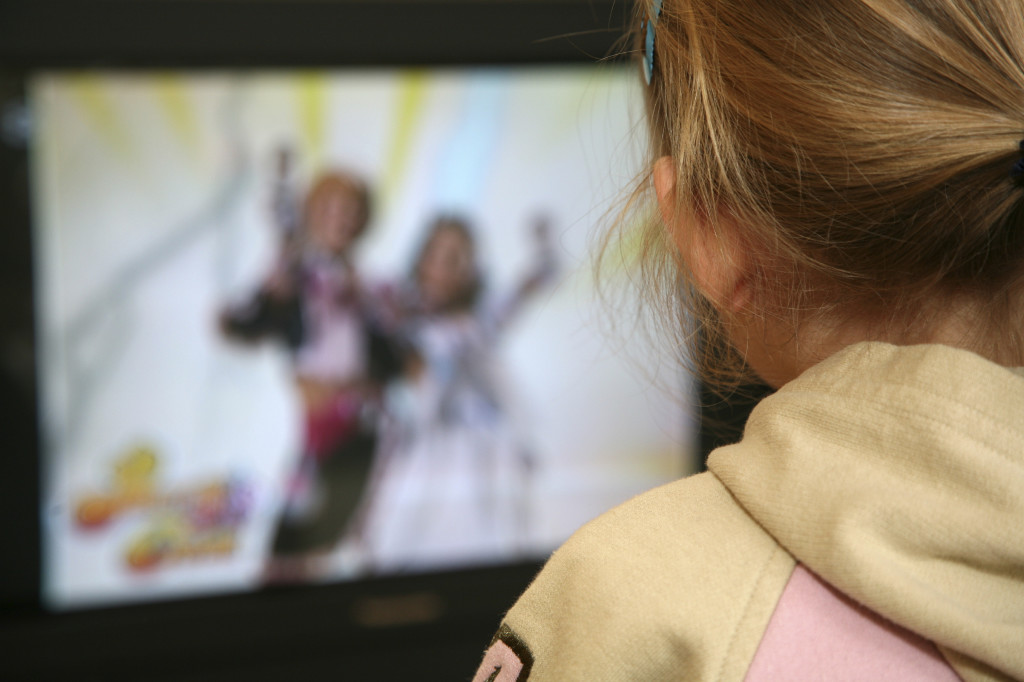
Let’s skip on forward to the twenty first century.
Here at Cine2DVD we’re very keen on preserving your memories; we’ve spoken about it enough. About the glory of the recording evolution and how grandma’s chicken dance will forever be preserved in high definition on an easy to access, easy to store DVD. But what about the actual advantages?
It’s no lie that the quality of your cinematic experience is way better than back in the day. For one, you can sit your kids down to their most beloved movie time and time again without having to worry about the tape wearing down (at least now you get that quiet time you’ve been craving); for another you have so much more space!
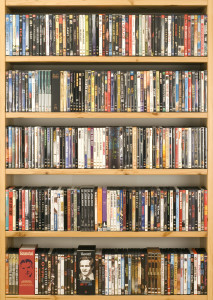
We’re not just talking about more space on your shelves (less bulk means more DVDs after all!) but about the capacity the digital world can hold compared to your 90’s videos. Where once the old family movies took up one or two bulky tapes, now it can all neatly sit on one disc! What does that mean? It means more space for more of your favourite family films (and don’t all of you parents just love that?).
But what about the benefits during play? Well for one, you don’t need to fear the rewind button. There’s no hanging around until you return to the beginning of the film. There’s not even any stinted audio when you pause and restart the film.
Fantastic, right? Well, if you’re thinking of having some of your quiet time back, or if you simply want to preserve your family favourites, our dedicated team work tirelessly to transfer your Cine or 8mm film to DVD. Sounds good? Want to know more? You can contact us here or telephone us on 0800 592 433 for more details.
